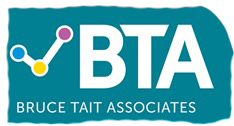27 February 2017 / BTA
Home
/ News & Views
/ Covering Letters... How to get them right!
A covering letter can make or break your chances of getting shortlisted for your dream job, however, it’s the area that most candidates fall down on. While CVs are carefully considered and crafted, all too often the covering letter is written in haste and half-heartedly. This does not go unnoticed by prospective employers and can result in you being ruled out before they even read your CV. I hope the following top 10 tips will help you get it right and excite the reader rather than get you eliminated.
1. UNDERSTAND THE PURPOSE BEHIND A COVERING LETTER.
While the CV is a factual record of your employment history, the covering letter allows you to give employers an insight into who you are and why you’d be a great asset to their organisation. This is much more personality lead and an opportunity for you to “sell" yourself in a completely different way. Employers need your skills but also want to enjoy working alongside you.
2. GET THE RIGHT TONE FROM THE OUTSET.
Don’t bullet point the covering letter or do headings, underlined or otherwise. Address the letter with a warm and engaging “Dear Mr/Ms………..” Sign off in the same way, expressing your gratitude to the hiring manager for “taking time out of their busy schedule to read the letter” or for "taking an interest” in your application. Perhaps say at the end that you very much hope to get the opportunity to meet them in person.
3. TAILOR IT TO THE CHARITY.
Always start with your passion for the work the charity does and your sincere commitment to helping them achieve their goals. If you have a personal motivation for applying e.g. you or a family member directly benefitted from the services, make sure you mention that. It’s amazing (and worrying) when the covering letter doesn’t even mention the charity by name. This is a big black mark against you and if the job has attracted a large number of candidates, you could get rejected on this count alone.
4. BUILD A PROFILE OF YOURSELF.
Allow yourself to inject some personality into this document so the charity can begin to build a profile of who you really are. Be disciplined and professional throughout but don’t be too stiff or formal. That can be off-putting by making you sound cold or pompous. You should aim for a more conversational tone, similar to how you’d interact at interview and, further down the line, with colleagues. Provided it’s well thought through and appropriate, some lightness of tone or humour can work very well e.g. at the end when you’re talking about your hobbies.
5. EXPAND ON CAREER SUCCESS.
Your CV will only have limited information about your career history. Using the BTA candidate pack and job/person specification as a guide, elaborate on relevant skills and experiences. For example, if the job is for a major donor fundraiser, use one or two paragraphs to give a couple of tangible examples of your success in terms of prospecting, cultivation and stewardship, remembering to include the sums of money generated. If you’re applying for a manager position, talk about how you have motivated your team and led them to achieve or even surpass their goals. If this would be your first manager position, talk about how you’d approach it and the style and techniques you would use.
6. ADD IN ANY RELEVANT INFORMATION.
You aren’t just a sum of your professional career. Many people who’ve succeeded at interview have done so because they have done something exceptional or meaningful in their personal life that makes them ideally suited to the job being advertised. Take this as an example. If you’ve been a volunteer for a charity for a number of years and a Volunteer Co-Ordinator position comes up, you will have a very valuable and empathetic perspective on the job. The covering letter is the ideal place to explain this so make the most of it.
7. GET THE WORD COUNT RIGHT.
Your covering letter is the beginning of the interview process. The same rules apply - don’t be long winded or repetitive and give relevant and valuable information only. You should aim to fill no more than two pages, although when it comes to senior roles, the expectation is that you will do 2-3 pages as you will have a broader base of skills and experience, not to mention successes. Remember the goal is to give enough information to get you into the interview room not to provide every cough and splutter of your career history. Selling yourself as a good communicator and then showing a lack of discipline in this area can be catastrophic.
8. BEWARE CUT AND PASTE.
It is apparent to everyone when a candidate does a cut and paste job from a previous application. Not only have we encountered the wrong charity name being used (a dead giveaway) but the covering letter will undoubtedly miss the mark in terms of highlighting your suitability to the specific requirements of the job being applied for. This is a blatantly lazy approach that will give off a very bad signal to the employer about your professionalism and passion for this job, not to mention your attention to detail.
9. PROOF READ.
It never ceases to amaze us how often CV s are sent to us riddled with typos, mistakes, wrong names and appalling grammatical errors. This is across the board but is particularly notable when it comes to senior, and even Chief Executives. Use spell check on your laptop and always, always proof read several times. It’s advisable to ask someone you trust to double check before you submit. There is often time to correct the document if these errors are pointed out but it gives a terrible first impression if they are not. Remember, we do the first shortlist for our clients so you need to impress us first and foremost.
10. GET IN EARLY.
Candidates tend to leave it until the last minute to send their CV s and covering letters to us. Sometimes they arrive a minute before the deadline. On occasion, we need to submit the shortlist to the client by the end of the day so this does not give us time to read your covering letter and track you down to recommend any changes. The earlier you get it to us, the more support we can give you. It also gets you on our radar and, possibly, on the shortlist at the very start.
I hope our top ten tips help you with your next application. Remember that the BTA team are here to guide and inform you throughout the recruitment process. We want you to land your dream job too!
Abeer Macintyre, Managing Director, BTA (Bruce Tait Associates)


